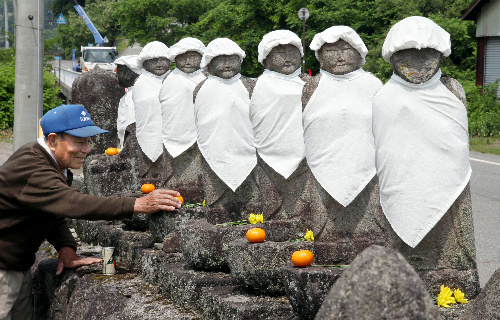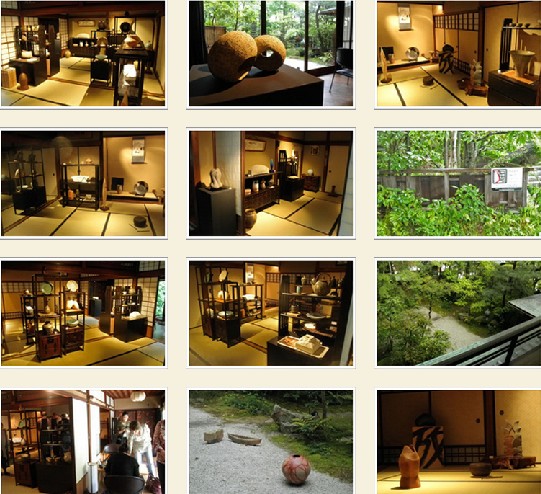Buddha Statues & Japan — July 2011
Hello Readers,
Knowledge Updates for July 2011. This month the newsletter is “abbreviated,” as I’m visiting my hometown in steamy Minnesota.
A Modern Day Miracle?
Six Jizō and the Killer Tohoku Earthquake.
In the wee hours on the morning following the March 11 Tohoku earthquake, aftershocks struck the northern part of Nagano Prefecture, causing an outdoor grouping of Six Jizō statues in Iiyama City 飯山市 to shift their position. Originally facing south, the statues turned about 90 degrees to the east, in the direction of nearby Sakae-mura village 栄村, as if to protect the villagers from harm. Indeed, Sakae-mura itself experienced three aftershocks in less than two hours, each about intensity 6.0. Village roads and railways were damaged, and over 2000 villagers were evacuated. But there were no causalities!! Not surprisingly, villagers say that Jizō saved them from bodily harm. The statues are each about 70 cm high, made of stone. There are actually seven Jizō in the grouping, but the first Jizō (the leader) did not change his position, whereas the other six turned on their bases to face Sakae-mura. Today they are venerated as protectors of the village, even though they are located in nearby Iiyama. (Note. Thanks to my longtime friend Gabi Greve for bringing this story to my attention. The story appeared originally in the Asahi Shimbun (June 9, 2011).
- Hells (Skt. Naraka, Jp = Jigokudō 地獄道)
- Hungry Ghosts (Skt. Preta, Jp = Gakidō 餓鬼道)
- Animals (Skt. Tiryasyoni, Jp = Chikushōdō 畜生道)
- Bellicose Demons (Skt. Asura, Jp = Ashuradō 阿修羅道)
- Humans (Skt. Manusya, Jp = Jindō 人道)
- Heavenly Beings (Skt. Deva, Jp = Tendō 天道)
Japanese Ceramics &
Robert Yellin Yakimono Gallery in Kyoto
Current Exhibitions
» Tokyo National Museum. July 20 through September 25, 2011 . Kukai’s World: The Arts of Esoteric Buddhism. This exhibition introduces masterpieces of Shingon Esoteric Buddhism, with a focus on the period when philosophical elements maintained a strong presence in the works. Along with objects brought by Kukai from Tang China, works directly related to him are also featured, such as his writings and sculptures produced under his instruction. If you are in or near Tokyo, don’t miss this exhibition.
» Kyoto National Museum. July 16 to August 28, 2011.
Creatures’ Paradise: Animals in Art from the Kyoto National Museum.
» Nara National Museum. Special Exhibitions Page. On to India! Xuanzang’s 30,000-Kilometer Trek. July 16 through August 28, 2011. Secret Treasures & Sacred Image of Yoki Tenman Jinja: “The Hallowed Yoki Shrine at Hatsuse.” July 16 through August 28.
Enjoy the summer.
mark from his hometown in minnesota







